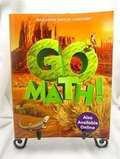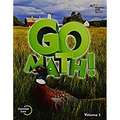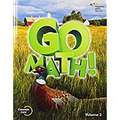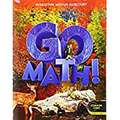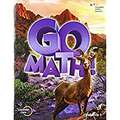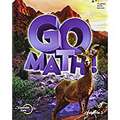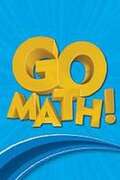- Table View
- List View
Go Math! [Grade 5] Chapter 10: Convert Units of Measure
by Edward B. Burger Juli K. Dixon Steven J. LeinwandNIMAC-sourced textbook
Go Math! [Grade 5] Chapter 11: Geometry and Volume
by Edward B. Burger Juli K. Dixon Steven J. LeinwandNIMAC-sourced textbook
Go Math! [Grade 5] Chapter 3: Add and Subtract Decimals
by Edward B. Burger Juli K. Dixon Steven J. LeinwandNIMAC-sourced textbook
Go Math! [Grade 5] Chapter 4: Multiply Decimals
by Edward B. Burger Juli K. Dixon Steven J. LeinwandNIMAC-sourced textbook
Go Math! [Grade 5] Chapter 5: Divide Decimals
by Edward B. Burger Juli K. Dixon Steven J. LeinwandNIMAC-sourced textbook
Go Math! [Grade 5] Chapter 6: Add and Subtract Fractions with Unlike Denominators
by Edward B. Burger Juli K. Dixon Steven J. LeinwandNIMAC-sourced textbook
Go Math! [Grade 5] Chapter 7: Multiply Fractions
by Edward B. Burger Juli K. Dixon Steven J. LeinwandNIMAC-sourced textbook
Go Math! [Grade 5] Florida
by Matt Larson Miriam A. Leiva Thomasenia Lott Adams Juli K. DixonNIMAC-sourced textbook
Go Math! [Grade 5] Texas, Volume 1
by Edward B. Burger Juli K. Dixon Matthew R. LarsonNIMAC-sourced textbook
Go Math! [Grade 5] Texas, Volume 2
by Edward B. Burger Juli K. Dixon Matthew R. LarsonNIMAC-sourced textbook
Go Math! [Grade 5] Volume 1
by Edward B. Burger Juli K. Dixon Steven J. LeinwandNIMAC-sourced textbook
Go Math! [Grade 5] Volume 2
by Edward B. Burger Juli K. Dixon Steven J. LeinwandNIMAC-sourced textbook
Go Math! [Grade 6] Volume 1
by Edward B. Burger Juli K. Dixon Steven J. LeinwandNIMAC-sourced textbook
Go Math! [Grade 6] Volume 2
by Edward B. Burger Juli K. Dixon Steven J. LeinwandNIMAC-sourced textbook
Go Math! [Grade K] Chapter 10: Student Edition Chapter 10 Grade K 2015 (Go Math! Ser.)
by Edward B. Burger Juli K. Dixon Steven J. LeinwandNIMAC-sourced textbook
Go Math! [Grade K] Chapter 11: Student Edition Chapter 11 Grade K 2015 (Go Math! Ser.)
by Edward B. Burger Juli K. Dixon Steven J. LeinwandNIMAC-sourced textbook
Go Math! [Grade K] Chapter 12: Student Edition Chapter 12 Grade K 2015 (Go Math! Ser.)
by Edward B. Burger Juli K. Dixon Steven J. LeinwandNIMAC-sourced textbook
Go Math! [Grade K] Chapter 1: Student Edition Chapter 1 Grade K 2015 (Go Math! Ser.)
by Edward B. Burger Juli K. Dixon Steven J. LeinwandNIMAC-sourced textbook
Go Math! [Grade K] Chapter 2: Student Edition Chapter 2 Grade K 2015 (Go Math! Ser.)
by Edward B. Burger Juli K. Dixon Steven J. LeinwandNIMAC-sourced textbook
Go Math! [Grade K] Chapter 3: Student Edition Chapter 3 Grade K 2015 (Go Math! Ser.)
by Edward B. Burger Juli K. Dixon Steven J. LeinwandNIMAC-sourced textbook
Go Math! [Grade K] Chapter 4: Student Edition Chapter 4 Grade K 2015 (Go Math! Ser.)
by Edward B. Burger Juli K. Dixon Steven J. LeinwandNIMAC-sourced textbook

